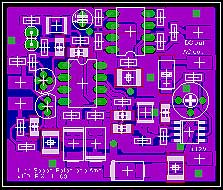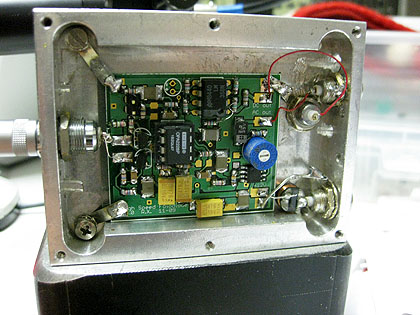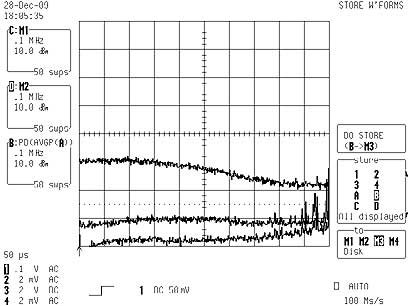

Return to home page
Since I got a few high speed low noise opamps flying around, I decided to build a wideband photodiode amplifier with lowest possible noise. This was mainly after I stumbled upon this interesting article by Phil Hobbs. It discusses a circuit that is shot noise limited but boasts a bandwidth of more than 1Mhz. This is possible by using a biased cascode input stage. I rebuilt this circuit with parts at hand, and it worked flawlessly right away. I added some periphery, ie., more AC amplification plus a floating virtual ground supply plus a level shifter for monitoring the DC signal. The purpose was to investigate noise in the outpout of laser diodes over a large bandwith, and for highest sensitivity the input stage should be driven as much as possible before saturation. That's why a DC monitor output is helpful for adjusting the photodiode illumination.
The complete circuit incl Eagle PCB is here:
It needs to be thoroughly shielded, not the least for avoiding radio stations:

Here the first application: shown is the noise spectrum for my laser heads. It makes use of the FFT capability of my scope, so that it acts as a spectrum analyzer; the horizontal scale is 100khz/div:

The upper trace shows the original noise output without the 100uH/10uF filter at the laser diode; clearly visible is the 250khz (+/-) peak stemming from the PWM preregulator of the TEC driver. The trace below is the dark noise with the laser light blocked.
The lower two traces show the same but with the 100uH/10uF filter combo in place right next to the diode; the interference of the PWM regulator has been eliminated.
Below a measurement of broadband noise of an ECDL (with Mitsubishi ML101F27):

Top trace: noise in an unstable zone.
Middle trace: noise spectrum for single mode operation, near 90mW.
Lowest trace: dark signal of detector. The peaks near 1Mhz are due to external interferences.
![]()
Return to home page
Vers . 1.0-12/09